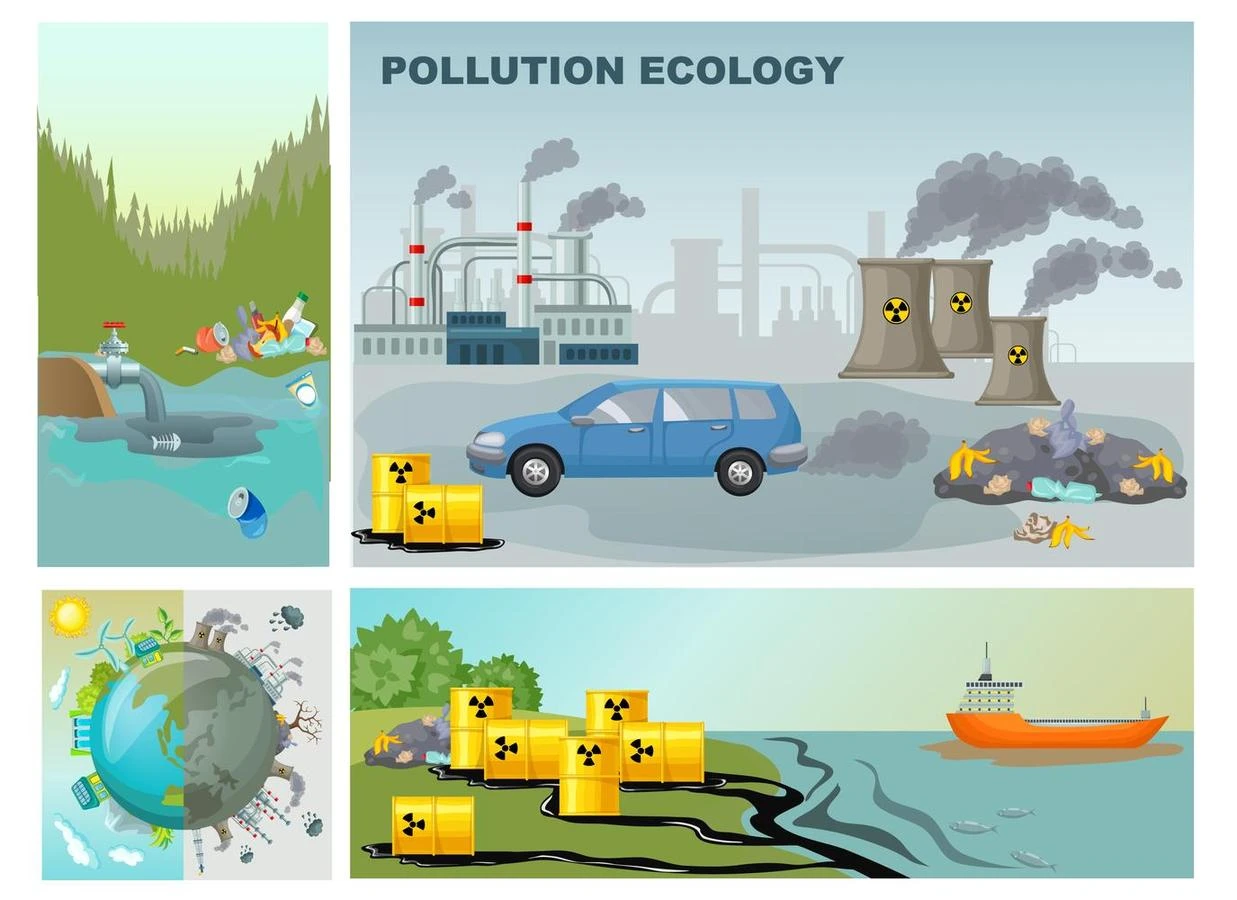Introduction
The radioactive materials that exist in the environment cause radioactive pollution. Various environmental conditions that are dangerous to life, are generated by the improper handling of radioactive materials. It has numerous adverse effects on both people and animals as well as the environment. The government should adopt a variety of policies to decrease the effect of radioactive materials. The Chernobyl incident was among the most notable instances of radioactive pollution.
Define radioactive pollution
When radioactive compounds are released into the atmosphere during nuclear explosions, nuclear weapon testing, and nuclear weapon development, it causes real damage to living things and their surroundings. This is known as radioactive pollution.
Sources of radioactive pollution and their examples
- Though rocks constitute the majority of background radiation, just a minor portion of it is produced by man-made items. Background radiation through naturally available radioactive minerals can be found in the soil, earth, and water.
- A number of these naturally occurring radioactive elements can be found in small amounts in the human body.
- And some examples of radioactive pollutants are radionuclides. They are the primary causes of emissions that result in the formation of beta particles, radioactive substances, gamma radiation, etc.
Reasons for Radioactive pollution
- The majority of human-caused radiation pollution was likely produced in the middle of the 20th century and it happened due to numerous research or operational nuclear explosions.
- Low to medium radiation may be produced during the treatment and removal of nuclear materials over a long duration of time. The primary problem with hazardous materials is that they cannot be biologically or chemically decomposed or handled.

Application of Radioisotopes
There are two main applications of radioisotopes.
- Radioactive Materials Leakages:
Ships have occasionally run straight into the ground on coral reefs or glaciers, discharging contaminants into nearby rivers and the surroundings. Among the numerous of these substances, petroleum products have a high radiation concentration and can be harmful to the environment.
- Smoke-detecting equipment:
Smoke detectors of ionization type contain very small amounts of americium-241, which has a half-life of 458 years.
- Establishment of Defensive Weapons:
Many deadly weapons are constructed of nuclear materials which cause radiation. Due to these, a serious health risk may occur.
Adverse effects of radioactive pollution
- Diseases caused by exposure to Radioactive Pollution:
The most common illness that appears in people who are exposed to radioactive pollution is cancer. Among the worst ailments caused by radioactive pollution are leukemia, anemia, and cardiovascular disorders.
- Cell damage and nuclear poisons:
Cell development may be influenced in several ways by radioactive exposure. Living creatures have different bodies made up of millions of cells, every of which performs a specialized function. It has been shown that radioactive pollution can alter pre-existing cells and harm tissues and organs permanently. Situations of high radiation exposure usually result in fatalities and chronic illnesses.
- Burns:
Although radiation is uncomfortable to endure, you can easily tell whether it has had an impact on you. The sudden appearance of blisters and burns serves as evidence. This leads to skin cancer, which can complicate the condition.
- Ruins plant growths:
The land can be significantly contaminated by improper disposal of radioactive materials. This type of waste is radioactive, and when it interacts with soil components, it can turn the soil exceedingly hazardous and unusable.
🌍 Discover powerful strategies to combat air pollution in our latest article on “Air Pollution Control.”
Prevention of Radioactive pollution
- Radioactive substances can’t be decomposed easily by any means of chemical or biological process. So during research on plants, chemical or biological products and radioactive substances are separated properly.
- Radiation waste confinement is done in far-off places, such as distant caves or deserted mines, which also require the deployment of barriers of some sort.
- Non-radioactive methodologies can be applied to carry out several frequently utilized tests in the biomedical discipline.
Summary
Every animal on this planet and the ecosystem is severely harmed by radioactive particles. Radioactive pollution is caused due to the contamination of air or water with radioactive elements such as uranium, potassium, radium, and many more. These pollutants endanger people and their lives. The extent of radioactive contamination is based on the number of radioactive waste produced. Strong radioactive materials are the most potent type of waste and can be generated by substances like uranium, which again is consumed in nuclear reactors.
Frequently Asked Questions
1. How does the human body react to radiation?
Ans: The DNA in human cells can be harmed by radiation. Acute Radiation Syndrome (ARS) can be caused due to high exposure to radiation. High levels of radiation exposure may potentially cause cancer.
2. What is the amount of radiation present in bananas?
Ans: Radiation of.01 millirem (0.1 microsieverts) can be generated by one banana. There is incredibly little radiation present here. So one would have to consume around 100 bananas to be exposed to the equivalent level of radiation that an American would experience daily from atmospheric radiation.
3. Which radiation is the most dangerous?
Ans: The most dangerous radiation kinds include those that damage DNA, such as gamma and x-rays. Despite the presence of clothing, X-rays and gamma rays can totally penetrate the body and harm DNA or cells. Compared to X-rays, gamma rays are substantially more dangerous.